| Entries |
| J |
|
Jews
|
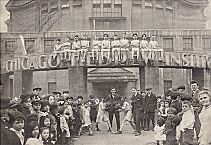
|
Jews began trickling into Chicago shortly after its incorporation in 1833. A century later Chicago's 270,000 Jews (about 9 percent of the city's population) were outnumbered only in New York and Warsaw. By the end of the twentieth century, approximately 270,000 Jews lived in the Chicago metropolitan area, but only about 30 percent of the entire Jewish population remained within city limits.
Chicago's first permanent Jewish settlers arrived in 1841 from Central Europe, largely from the German states. A few lived briefly in eastern cities before being attracted to the burgeoning city of Chicago. These early settlers included Henry Horner, whose grandson of the same name would become the first Jewish governor of Illinois. Many of these settlers started out as street peddlers with packs on their backs and later opened small stores in the downtown area. From these humble beginnings they later established such companies as Florsheim, Spiegel, Alden's, Mandel Brothers, Albert Pick & Co., A. G. Becker, Brunswick, Inland Steel, Kuppenheimer, and Hart, Schaffner & Marx.

|
In 1859 the United Hebrew Relief Association (UHRA) was established by some 15 Jewish organizations, which included a number of B'nai B'rith lodges as well as several Jewish women's organizations. After the fire of 1871, Jews moved out of the downtown area, mainly southward, settling eventually in the fashionable lakefront communities of Kenwood, Hyde Park, and South Shore. Wherever they settled they established needed institutions, including Michael Reese Hospital, the Drexel Home (for aged Jews), and the social and civic Standard Club.
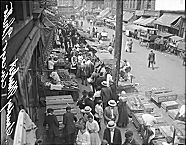
|
The Eastern European Jews differed from the German Jews in their cultural background, language, dress, demeanor, and economic status and until mid-twentieth century the two maintained distinct neighborhoods and institutions. Friction also owed to differing religious practices, as the Orthodox newcomers encountered a German Jewish community increasingly oriented toward Reform Judaism.
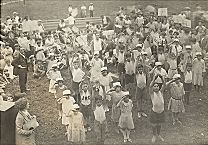
|

|
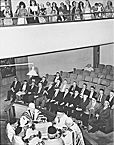
|
Many Jews joined the postwar migration to suburbia. Housing discrimination had limited suburbanization in early years, although in the early 1900s small numbers of Jews had moved into some of the suburbs that were open to them. The most concentrated movement of Jews into the suburbs followed World War II with the removal of restrictive housing covenants and increased affluence. Approximately 70 percent of the estimated 270,000 Jews in the Chicago metropolitan area in the 1990s lived in the suburbs, compared to just 5 percent in 1950. Most were concentrated in such northern suburbs as Skokie, Lincolnwood, Glencoe, Highland Park, Northbrook, and Buffalo Grove.
Although numerous Jewish institutions have been built in the suburbs, dispersal over wide areas has made it more difficult to supply certain services desired by Jews. These suburbanites are less dependent on totally Jewish institutions and services and there are no Jewish-oriented Maxwell, Roosevelt, Lawrence, or Devon commercial streets like the ones that once served their parents and grandparents so well in the dense Jewish neighborhoods.
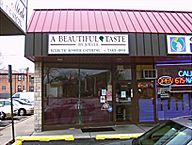
|
Changing social and family values have accompanied a growing divorce rate, increasing assimilation, and a high rate of intermarriage. Chicago's Jewish community is now putting increasing emphasis on Jewish all-day elementary and high schools, of which there are about 30, Orthodox and non-Orthodox. The Jewish Federation of Metropolitan Chicago, a community umbrella organization funded by the contributions of almost 50,000 families annually, maintains or supports numerous educational, health, religious, cultural, and social welfare services that encompass many facets of Jewish life, both at home and abroad. It also maintains eight Jewish community centers serving the major Jewish areas. Hundreds of other fraternal, social, cultural, charitable, Zionist, and political organizations serve the community, including some with numerous local branches, such as B'nai B'rith, Hadassah, and Jewish War Veterans. The Spertus Institute of Jewish Studies houses an extensive library, mounts exhibitions of Jewish interest, and awards bachelor's and graduate degrees from its program in Jewish studies.
The Encyclopedia of Chicago © 2004 The Newberry Library. All Rights Reserved. Portions are copyrighted by other institutions and individuals. Additional information on copyright and permissions.